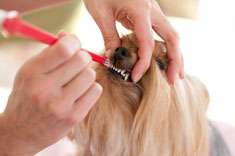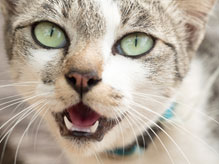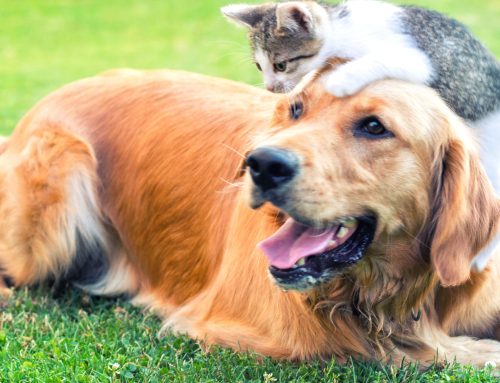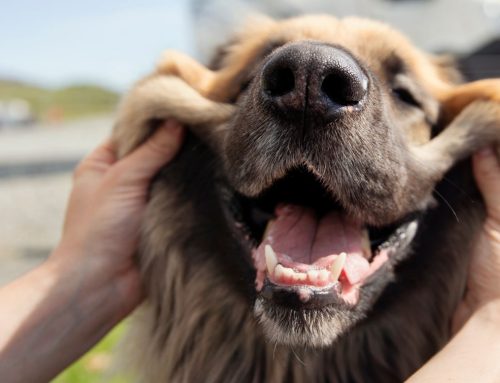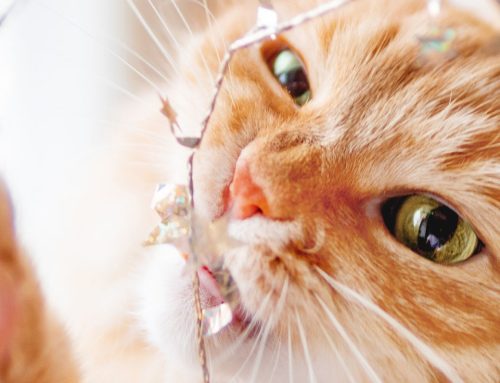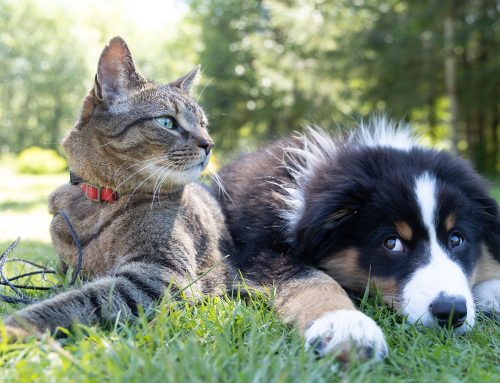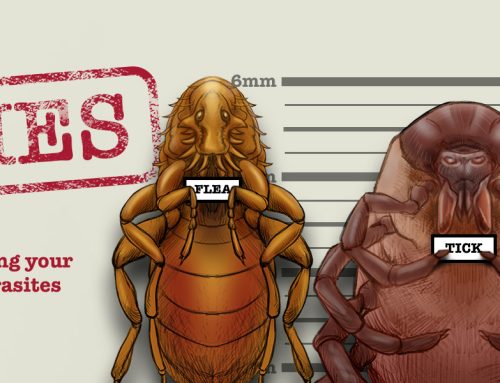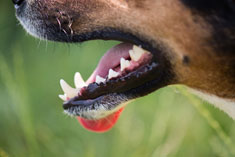
What is dental disease and what are the risks to your pet?
Bacteria in the mouth forms a clear substance called plaque. Plaque sticks to the surface of the teeth and becomes hardened by minerals in the animal’s saliva. Over time, the hardened plaque becomes tartar, which is a brown/yellow substance that firmly attaches to teeth. It can be seen along the gum line when you or your vet pull up your pet’s lips to inspect. The tartar on the teeth and gums causes inflammation (gingivitis).
Tartar on the teeth alone is not the main problem. More serious trouble begins when tartar spreads to beneath the gums. Tartar that cannot be seen will damage the tissue around the teeth and can eventually lead to tooth loss. It can also lead to holes, and damage to the jawbone. Bacteria beneath the gum line can also secrete toxins which can cause infections and enter the bloodstream, weakening immunity and impacting the animal’s organs.
How can you tell if your pet has dental issues?
Unfortunately, other than significantly smelly breath, there are very few obvious symptoms. As a result, periodontal disease is usually under-treated.
Common signs of dental disease to look out for:
- Bad breath
- Reduced appetite
- Bleeding or receding gums
- Discoloured teeth
- Loose teeth
- Difficulty chewing
You should lift your pets lips and take a look at their teeth regularly. Keep an eye out for red or inflamed gums, blackening, or loose teeth and swelling of their face, for clues that something might be wrong.
How to prevent gum disease in your pet?
A good home dental care routine will help keep your pet’s chompers clean and healthy. It can even save you money by reducing medical complications that can result from the need for tooth extractions and other emergency dental procedures. Establishing oral hygiene routines with your pet at a young age trains them to accept dental care throughout life.
Simple ways that you can help care for your pets’ teeth:
- Feed your pet a complete and balanced diet
- Regular dental check-ups with the vet
- Chewy toys to stimulate saliva
- Chews and dental treats formulated for oral health
- Regular tooth brushing
There are also special pet food brands available that are designed to assist with dental hygiene by “brushing” the teeth as they are eaten. For more specific advice about caring for your pet’s dental hygiene, please consult with our veterinarian
How do you brush your pets’ teeth?
Go slowly while you are introducing a toothbrushing regimen. Use positive reinforcement to train your pet to accept the process. Put a small amount of pet toothpaste in your pet’s mouth and reward them immediately with a treat, a favourite toy and affection. Continue each day to give your pet small tastes of toothpaste. Work up to administering the toothpaste into your pet’s mouth on a toothbrush followed by a reward.
You can use a regular child’s toothbrush or purchase a finger toothbrush from your vet or pet stores. Please note that you should never use regular (human) toothpaste to brush your pet’s teeth as it is toxic. Many human kinds of toothpaste are sweetened with xylitol (commonly found in sugar-free gum) and, if ingested, can kill your dog. There are special pet kinds of toothpaste that are beef or poultry flavoured to appeal to your animal. Ask your vet for recommended brands.
Keep the early sessions very brief and stop for the day if you notice your pet is becoming too agitated or upset by it. Your dog or cat may feel more relaxed on your lap while having their teeth brushed. Cats can be trained the same way as dogs. If your cat squirms too much during toothbrushing, try wrapping them in a towel and holding them close to you.
When you and your pet are more comfortable, you can try brushing:
- Use your fingers to gently pull the gums away
- Start at the front of the mouth, as pets will usually be more accepting of this
- Place the toothbrush bristles where the teeth and gums meet and move in a circular motion
- Pay attention to any gaps between teeth and move throughout the mouth all the way to the back of the mouth
